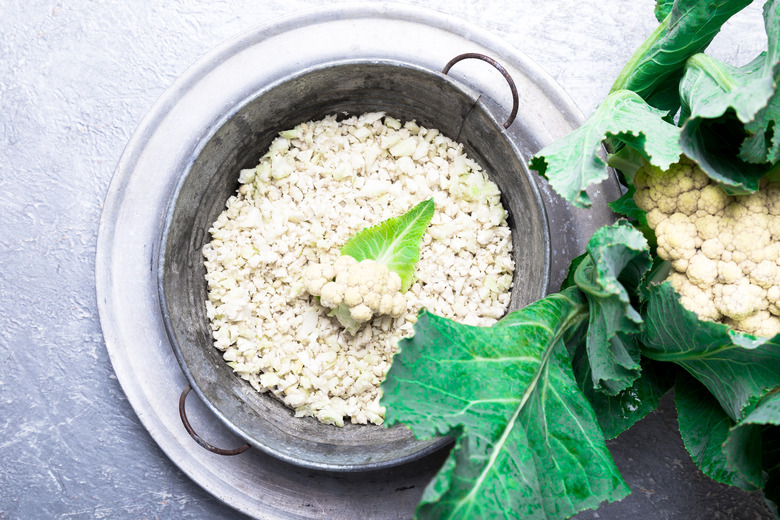Why Is My Cauliflower Turning Purple?
Annual cauliflower (Brassica oleracea [Botrytis Group]) grows best in the cooler temperatures of spring and fall. Its large white head is composed of "curds," which are clusters of immature flowers. While white is the most common color, variations are possible due to climactic conditions and light levels. Planting at the proper time and temperature will prevent a white cauliflower from turning slight purple or pink.
Some cauliflower cultivars, however, are bred for their purple coloration such as Purple Graffiti, Purple of Siciliy, and Violet Queen. These cultivars have brilliant purple heads that are rich in anthocyanin, a naturally occurring plant chemical responsible for the color. It's possible that the cauliflower you purchased as seedlings at your garden center simply may have been mistagged.
Climate Considerations
Climate Considerations
Cauliflower requires daytime temperatures between 70 and 85 degrees Fahrenheit to perform its best. When planting cauliflower, be mindful of the weather as the plant needs to be large enough to sustain the development of a large head yet late season frost can kill or harm the young plant. Once mature, some varieties can tolerate brief exposures to cold temperatures down to 20 degrees.
Depending on the length of your growing season, you can purchase either early maturing cauliflower, which can be ready in as little as 60 days, or a late maturing variety. In areas where summer temperatures aren't extreme, gardeners can get an early harvest and then plant again in June for a fall harvest.
How to Plant Your Cauliflower
How to Plant Your Cauliflower
Transplants are the easiest way to start cauliflower. Transplants should have three to four true leaves before planting outside and must be in the ground two to three weeks after the date of the last expected frost. When creating your planting bed, remove competitive weeds and debris, make sure it is well tilled and incorporate generous amounts of compost. Plants should be placed 18 to 24 inches apart in rows 2 to 3 feet apart.
Regular care includes watering several times per week to keep the soil moist but not soggy and a water-soluble fertilizer if recommended by soil-test results, which should be given at half-strength weekly and increased to twice per week after the plants are established. Watch carefully for aphids, leaf hoppers and other pests and take steps as needed to combat such pests.
Purple Cauliflower: The Cause and Solution
Purple Cauliflower: The Cause and Solution
Long summer days, extremely hot temperatures and sun exposure may cause white cauliflower to exhibit a shade of purple, and on occasion leaves may grow through the head. Once this happens there is nothing to be done, but you can prevent this from happening the next year with a process called blanching, which protects the head from the sun. This should be done when the cauliflower is about 2 inches across. To blanch, gather the largest exterior leaves and flop them over the head. You can tie the leaves or fasten them with a clip. The leaves will shield the developing curds from the sun but still allow them to grow, while retaining their white color.
When and How To Harvest
When and How To Harvest
Cauliflower is fully grown about seven to 12 days after the blanching process began. Once the head is mature, loosen the leaves over the head and cut the main stem to harvest the head. The curds should be fairly smooth and not have obvious florets while an overgrown cauliflower will have a rice-like texture with coarse, individual florets. After you've harvested your cauliflower, pull the cauliflower greens and place them in your compost; the plant will not produce another head.
References
- University of Illinois Extension: Cauliflower
- Weekend Gardener: Growing Cauliflower
- University of Minnesota Extension; Growing Broccoli, Cabbage and Cauliflower in Minnesota; Vincent A. Fritz, Carl J. Rosen, Michelle A. Grabowski, William D. Hutchinson, Roger L. Becker, Cindy B.S. Tong, Jerry A. Wright, Terry T. Nennich
